- NEW DVD Series – Stone Setting with Bezels
- Tube Set Charm by Kim St. Jean
- Prong Basket Pendant by Kim St. Jean
- NEW DVD Series – Stone Setting with Cold Connections
- New DVD Series – Stone Setting with Wire
- NEW DVD Series: Introduction to Stone Setting by Kim St. Jean
- Featured Tool: Bracelet Bending Plier
- NEW Dvd by Eva Sherman
- Fun, Fast Fold Forming DVD Series
- Double Band Ear Cuff from Alex Simkin
Gem Profile July 5: Glass, Crystal and Quartz.
by Layna Palmer, Wire-Sculpture.com

Glass, Quartz & Crystal
Happy Fourth of July! Since it’s a holiday weekend, and we have been busy watching parades, fireworks, wearing red, white and blue and singing patriotic songs, I decided to focus a bit on the colors of our flag and how they fit into jewelry.
From the book “Our Flag” published in 1989 by the House of Representatives:
“On July 4, 1776, the Continental Congress passed a resolution authorizing a committee to devise a seal for the United States of America. This mission, designed to reflect the Founding Fathers’ beliefs, values, and sovereignty of the new Nation, did not become a reality until June 20, 1782. In heraldic devices, such as seals, each element has a specific meaning. Even colors have specific meanings. The colors red, white, and blue did not have meanings for The Stars and Stripes when it was adopted in 1777. However, the colors in the Great Seal did have specific meanings. Charles Thompson, Secretary of the Continental Congress, reporting to Congress on the Seal, stated:
“The colors of the pales (the vertical stripes) are those used in the flag of the United States of America; White signifies purity and innocence, Red; hardiness & valor, Blue; the color of the Chief (the broad band above the stripes) signifies vigilance, perseverance & justice.”
Also this from a book about the flag published in 1977 by the House of Representatives:
“The star is a symbol of the heavens and the divine goal to which man has aspired from time immemorial; the stripe is symbolic of the rays of light emanating from the sun.“
Let’s talk Glass, Quartz and Crystal:
A couple of years ago, Dale Armstrong did a series of gem profiles about quartz. In her profiles she touched on several different types of glass that have been labeled as quartz. Technically they were since both quartz and glass have the same base of silicon dioxide (SiO2), however, the main difference between glass, quartz and crystal is the arrangement of the atoms and the basic molecular structure of the material.
- Glass is considered an amorphous solid; it doesn’t have a crystalline structure and is made primarily of silicon, potash, lime and soda.
- Quartz crystals are pure silicon dioxide and found within the earth.
- Crystal is made with silicon, sodium and lead, making the atoms in the glass line up and form crystals which allow it to be carved and faceted easier than glass.
In jewelry making, we use all three materials; glass, quartz and crystals. Today I thought it would be nice to touch on all three.
What is Glass?
Glass beads are made from a thin reed, or cane, that is cut, drilled and polished. The most familiar type of glass in jewelry making would probably be the seed bead and fire-polished Czech beads. Czech glass beads are faceted and then put in a furnace to “polish” the rough edges with heat. They have to be careful during the process or the beads will melt. These types of beads are amorphous and are not as bright and don’t have the refraction properties of crystal.
What is Quartz?
Quartz, the beautiful and natural stone, comes in a variety of colors from rose to smoky and has been valued throughout the centuries for jewelry and other gemstones. Some of the most familiar quartz gems are Amethyst, Citrine, Smoky and Rose quartz. The color of the quartz depends on the end ions when the Silicon Dioxide was forming into crystals. For example; the iron that creates the beautiful purple in amethyst.
What is Crystal?
Crystal is similar to quartz in that it has a crystalline structure and is also made of silicon dioxide. The only difference is that it is man-made just like a Cubic Zirconium, and is the same chemical composition as diamonds. Crystal is glass made with silicon, sodium and lead. The lead makes the atoms in the glass align turning it from an amorphous solid into a crystal. Anciently, trace amounts of lead were used to color glass, but not enough of a concentration was used to turn the glass to crystal. This process wouldn’t be developed until 1676 when an Englishman by the name of George Ravenscroft added lead oxide in a higher concentration making the glass more clear, more durable and able to be carved and faceted into glasses and beads.

This unusual specimen comes from Tibet. Notice not only the exotic crystal scepter growth, but also the clay inclusions within the bottom crystal.
About Crystal:
In 1891 Daniel Swarovski invented a machine to cut and facet crystal beads exploiting the refractive and reflective nature of the crystal to give us Swarovski Crystal. Swarovski Crystal contains up to 32% lead dioxide. The addition of lead to glass not only turns it into a crystal, but also lowers the melting point and makes it softer and easier to carve and facet. It’s the lead that gives the crystal the clarity and sparkle we love.
Tying it all together!
So at this time of year when we are wearing the colors of our nation; Red, White and Blue, remember that they symbolize the values of a people, and they’re a lot of fun too!
Next week, we will discuss Pearls – freshwater, saltwater, natural and cultured!
Have you made jewelry with any type of pearls before? Send us pictures at tips@wire-sculpture.com and they could be featured!
Resources & Recommended Reading
Gem Profile by Layna Palmer
Click to Receive Daily Tips by Email






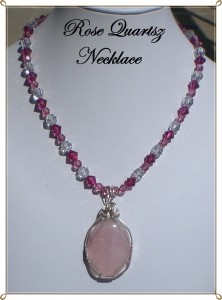
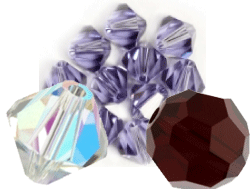
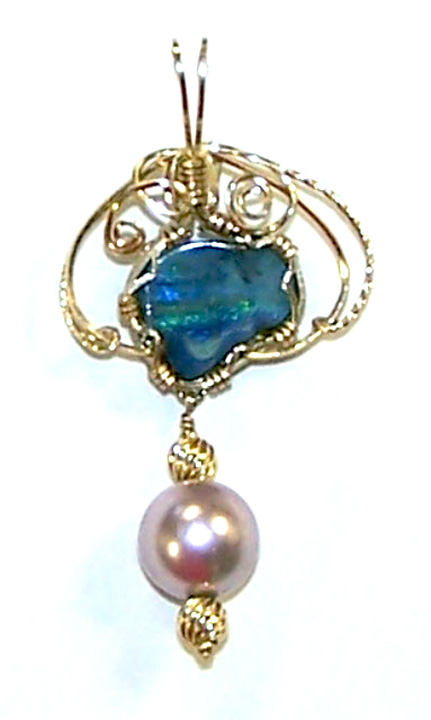


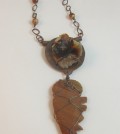
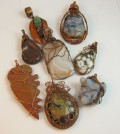

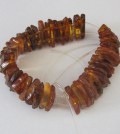

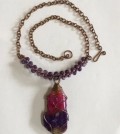
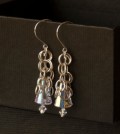
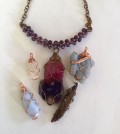
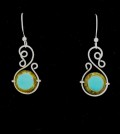
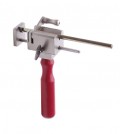
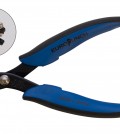
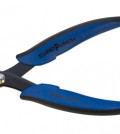
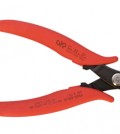
Lisa
July 7, 2013 at 4:40 pm
I have learned so much from you, thank you.
I was wondering, with Swarovski announcing that it is going to “lead free crystals” how will they achieve the same beauty and refraction that they are known for and as they promise to keep? Do you have any input or info on this?
Layna
July 8, 2013 at 9:46 am
Swarovski introduced the lead free crystals to the market in 2012 under the name advanced or spectra. The crystals are supposedly visibly identical to the leaded crystal, but are lighter. The information I found is that both types of crystal will be available with Swarovski switching over to offering only lead free crystal over the next few years. You will still be able to purchase the figurines in both leaded glass and lead free.